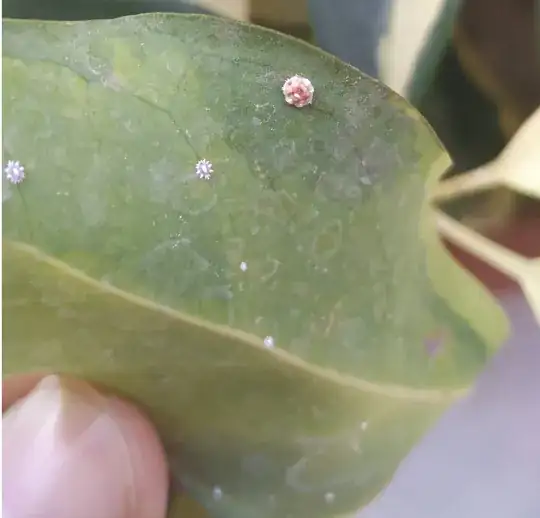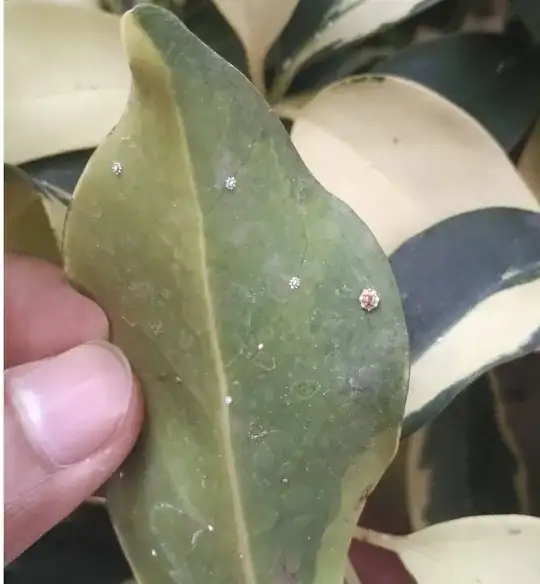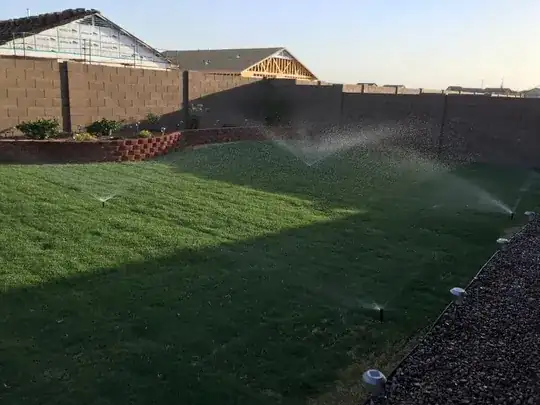Your Pokemons are waxy scale, or coccidae. Your description in the comments above is spot on: another name is "tortoise scale".
The Florida wax scale (Ceroplastes floridensis) looks quite similar, but I wouldn't venture a definitive id based on a few photos, Ceroplastes japonicus (pictures) is another possible candidate, and there are more Ceroplastes.
As cute as they are, they do damage your plant. The nymphs are sucking lots of plant sap, which weakens the plant and their sweet excrement (yes, they poop out sugars from the plant's sap) can be a base and fodder for fungal diseases. And they multiply quickly....
If you are a very patient person, you can pick them off every day or so, but with only limited success - especially the smallest ones hide in every nook and crevice. This is where an insecticide is justified. I personally had good success with systemic pesticides (ok here because you don't eat the schefflera), because it gets even the tiny ones that might hide from sprays.



